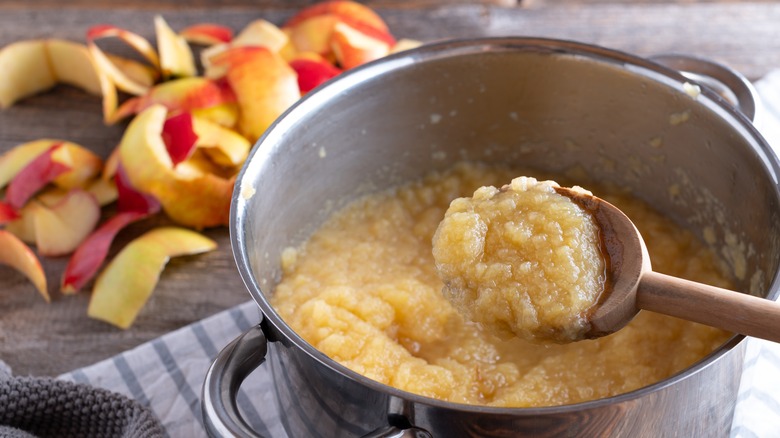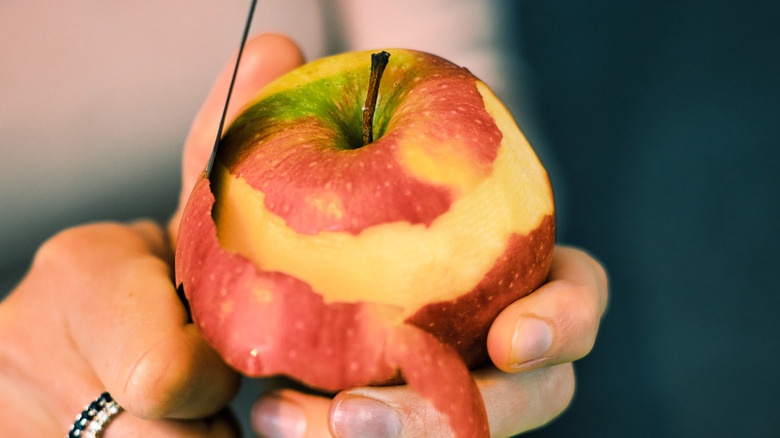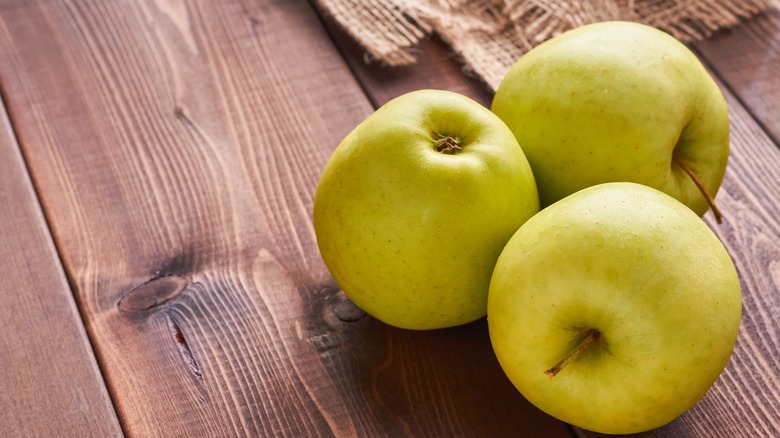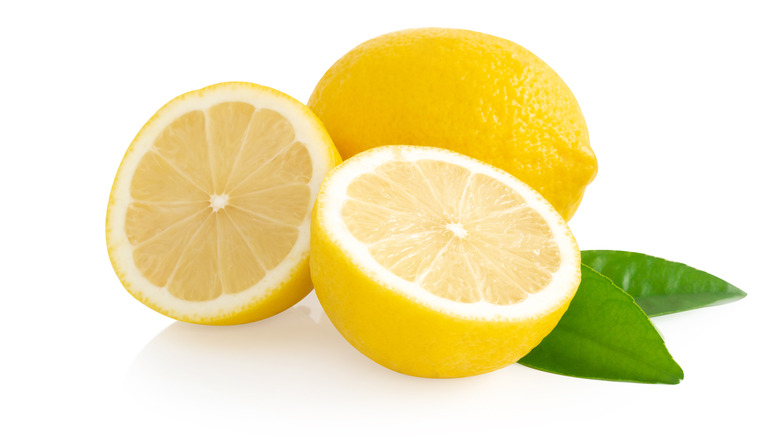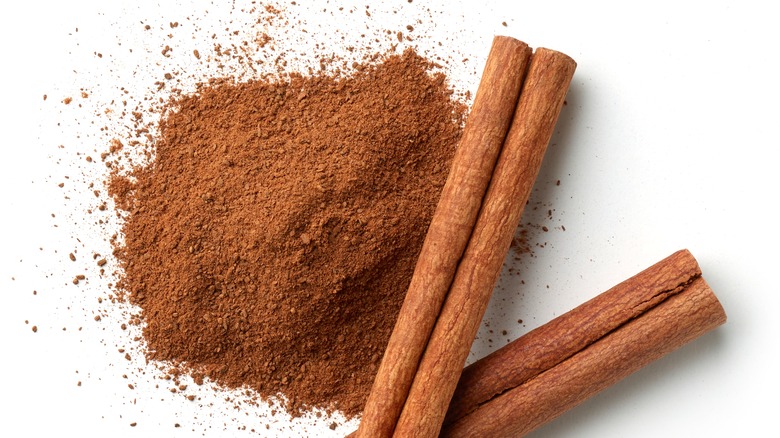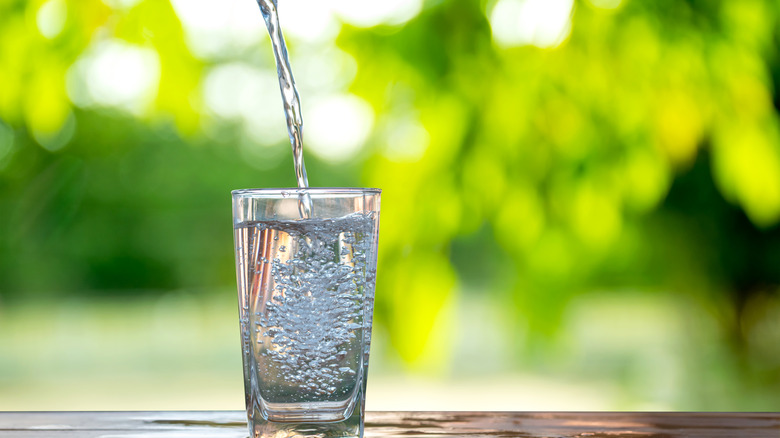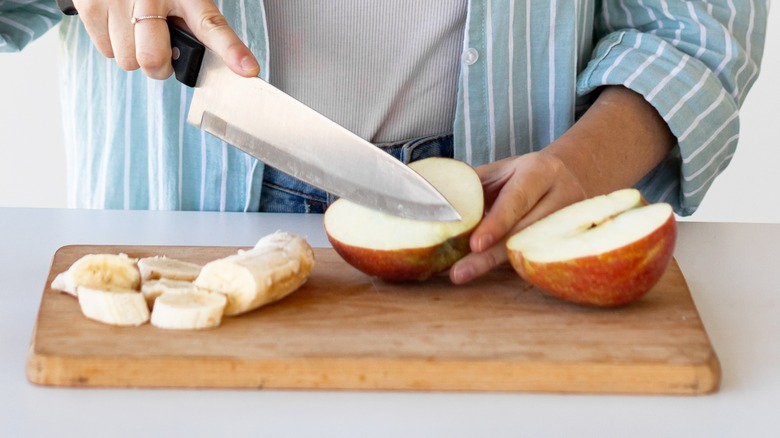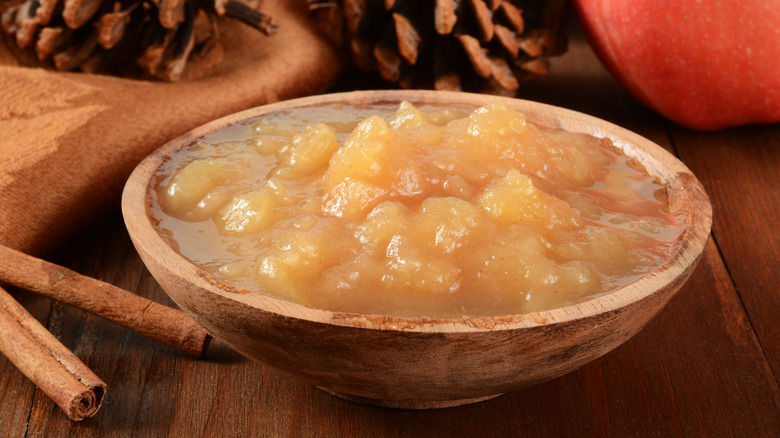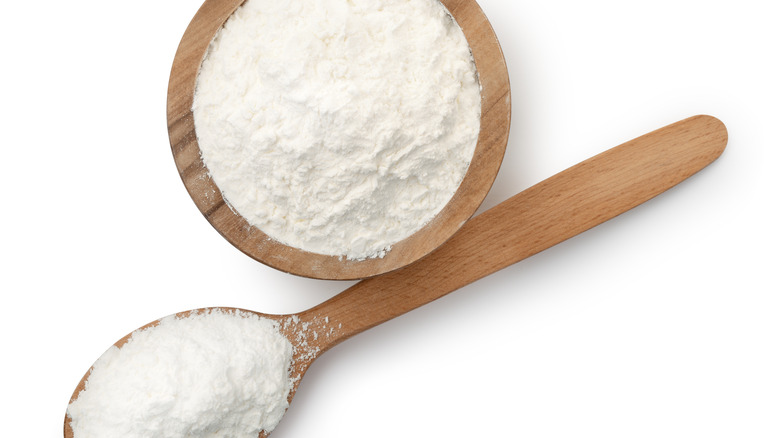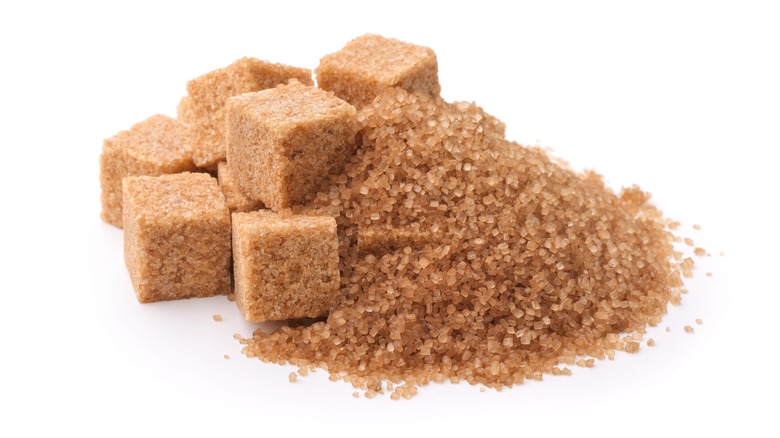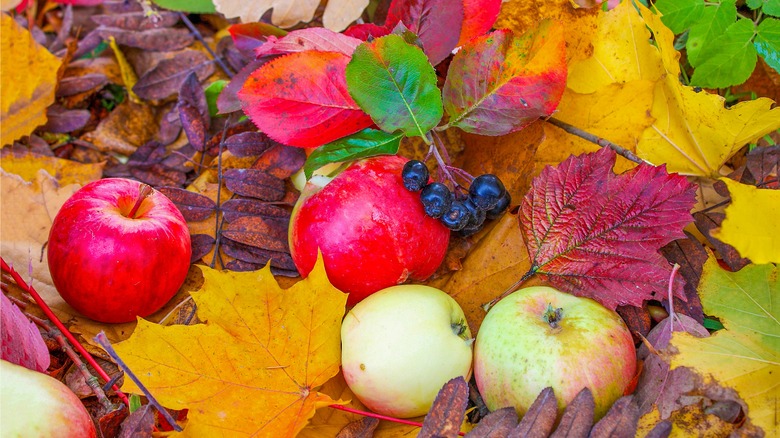Mistakes Everyone Makes When Making Applesauce
There's nothing better than a batch of warm, sweet, and deliciously golden homemade applesauce. While it is often deemed a child's food, there's much more to applesauce.
There are multiple ways to consume applesauce; it can be used in cakes and cookies or simply stirred into greek yogurt and mixed with homemade granola. Best of all, you can use applesauce to replace eggs, sugar, and oil in most baked goods for a healthy alternative.
Its irresistibly sweet flavor and moist texture aren't the only reasons we love applesauce. According to WebMD, applesauce contains antioxidants known as phytochemicals which can potentially help protect against cancer, diabetes, and heart diseases. Applesauce is definitely worth mastering at home.
That being said, several things can go wrong when making applesauce. There are several effective ways of mastering your applesauce game, from learning which types of apples are best for applesauce to ensuring you are using the right thickener for your sauce. Following a few easy and effective techniques will help you up your applesauce game and ensure you never mess it up again.
Peeling the apples
Apples are a delicious healthy fruit, no doubt. But there's a question that may plague your mind when eating apples: "Should I, or should I not remove the skin when eating apples?"
Research indicates eating apples with the skin intact has several health benefits: According to SBS, apple peel extract is a powerful antidote that can fight cancer cells and boost cardiovascular health. An apple a day sure does keep the doctor away.
Moreover, apple peel has a higher concentration of polyphenols that help fight against many diseases. While these health benefits are reason alone to add them to the applesauce recipe, the peel also contributes to the sauce's texture and flavor profile.
The secret to making awesome applesauce lies in the peels. Applesauce without the peels would lack the mouth-watering smell that drags everyone to the kitchen for a taste. Additionally, these nutritious and flavorful apple peels also provide the color that seeps into the sauce, giving applesauce its characteristic rose-pink blush.
If you'd like to include the peels in the recipe, you should simmer the peels and cores together in a bit of water. Then, you can add this liquid gold to the applesauce to give the sweet-and-tart flavor to this classic applesauce.
Using the wrong variety of apples
How could anyone go wrong with picking an apple? As long as it is red and spotless, it's perfect, right? Well, while picking apples for a chomp and munch is pretty straightforward, you can make the mistake of using the wrong apples for your applesauce.
Golden delicious apples take the lead on Stemilt's list of recommended apples for making applesauce. That is because these scrumptious apples have a thin skin that cooks wonderfully, and the flesh has a sweet, delicate taste that makes for a very tasty applesauce. You can also use Pink Lady, Fuji, Macintosh, and Cortland apples.
Cortland apples have an alluring red color with juicy flesh that adds a beautiful blush to the sauce and a sweet flavor with just the right hint of tartness (via Apple Holler). Furthermore, they are perfect for baking and cooking as they are slow to brown. These apples will give your applesauce an outstanding play of flavors and textures.
On the other hand, you may want to avoid using Red Delicious apples, not just for making applesauce but for cooking in general. According to a user on Reddit, red apples were bred as a commodity, so they lack flavor and texture. Also, they'll brown up instantly and turn to mush when exposed to heat, which isn't ideal when making applesauce.
Not adding lemon juice
Many folks might not know this, but adding 1 tablespoon of lemon juice is essential for making applesauce (via PennState Extension). Lemon juice can be used to counter the sweetness of your applesauce if you haven't tossed in both sweet and tart apples in the mix. Additionally, lemon juice is essential to preventing the apples from browning.
Surprised? Don't be. You've probably noticed that when you leave apple wedges on the counter, they'll start to turn brown. This is because when an apple is exposed to air, enzymes in the apples cause oxidation, which causes the flesh to turn into a rusty color.
When you're storing applesauce, the space between the lid and sauce contains oxygen, which can result in the applesauce losing its color to oxidation. The same will occur if you're not eliminating air bubbles from the sauce before pouring. You can use a spatula or a bubble popper to eliminate air bubbles altogether.
But, the easy peasy lemon squeezy solution is to add lemon juice to your sauce. Ascorbic acid reduces the enzyme reaction (via Multidisciplinary Digital Publishing Institute). Since lemons are packed with ascorbic acid, they're perfect for countering the oxidization reaction and adding a bit of tangy acidity to your flavorful sauce. According to Reddit, you only need to add 4 tablespoons of lemon juice in the recipe for 500-milliliter jars or 4-quart jars.
Using ground cinnamon
The affair between cinnamon with apples is a tale as old as time. These ingredients go exceptionally well together, and the flavors that unify in this recipe are the epitome of deliciousness. Cinnamon has a sweet and spicy flavor, which is a perfect addition to the flavor profile of applesauce. But you may be wondering whether you should use ground cinnamon or a cinnamon stick.
Ground cinnamon has a stronger flavor and packs a pungent taste when added to applesauce (via Our Everyday Life). Conversely, cooking cinnamon sticks with liquids adds a delicate, subtle flavor that makes your taste buds tingle with pleasure.
If too much ground cinnamon is added, it can give your applesauce a bitter taste. Since the loose powder form of cinnamon has a higher flavor concentration than the stick, it ends up overpowering the flavor profile of applesauce.
Moreover, ground cinnamon gives the applesauce a rather 'muddy' look. This occurs because the loose brown particles of the cinnamon are scattered across the liquid as it cooks, giving it a shade of browned applesauce.
According to a user on Reddit, if you want to impart a subtle flavor, especially if "you're not going for a dish that screams cinnamon," then it's best to use cinnamon sticks. And in this case, since we're making applesauce, we want the cinnamon to add warmth, spice, and deliciousness.
Adding too much water
You can easily ruin applesauce by adding too much water. Sometimes your apples release more juice than anticipated, resulting in the loose consistency of runny applesauce that lacks the appealing taste of delicious applesauce (via Leaf TV).
We know it can be disappointing watching the sauce cook, waiting and waiting for the heat to evaporate all that unwanted liquid. But have no fear; we are here. With a swish and flick of a wand along with a chant of "thickener," you'll transform your sad applesauce into a mouth-watering delicacy.
You can use a starch thickener, like arrowroot or tapioca, with ¼ cup of runny applesauce and stir them together. Then, simply pour in your mixture with the rest of the applesauce on heat until it thickens.
To avoid this conundrum beforehand, simply make sure you use firm apples (via Simple 30). Additionally, make sure you do not remove the skin too soon from the sauce before the apples have a chance to become soft and tender. This is because the apple peels have pectin, which naturally acts as a thickener for the sauce.
Cutting the apple into oversized pieces
When it comes to chopping up apples for your favorite applesauce recipe, it is crucial that you cut them into the right size. Irregular-sized apple pieces do not cook properly, as some will become too soft while the bigger chunks will feel awkward in your mouth.
This will affect the quality of your applesauce, leaving you with a disappointing purée. Why not save yourself the frustration of redoing your applesauce from scratch because your apples did not cook properly?
According to Garlic Delight, Fuji apples are the best variety of apples for making delicious applesauce, so it's important to ensure that you cut them in the right size.
As Dennis Russell tells us on his Youtube channel, Dennis From Scratch, the proper way to cut an apple is by dicing it into large shapes. First, hold your apple down on your chopping board and make a nice clean cut a little distance away from the center. Then as you can see the core, slice your apples from the remaining sides until only your core is left.
Next, pick up the large pieces and cut them down the sides, vertically and horizontally. You only need to make a few cuts, so you get large squared pieces. According to Detroit News, you can cut them into 1-inch chunks to make smooth but textured applesauce.
Not adding extra ingredients
The difference between average-tasting and incredible applesauce lies in a few extra ingredients. While we agree that the mix of sweet and tart apples makes for excellent and sophisticated applesauce, sometimes, you need a little cup of this and a sprinkle of that to spice up your otherwise mediocre sauce. Don't worry, if you're clueless about extra ingredients for applesauce, we're here to guide you.
If you're looking to spice things up, simply grab cayenne pepper from your spice shelf for an extra hit of flavor. Cayenne pepper will give your concoction a warm taste, making for a finger-lickin' hot applesauce. You can start with a pinch and gradually increase the amount until it matches your taste requirement (via FreshDirect).
If your purée is too well puréed, as in, it's lacking in texture, you can try adding dried fruit to the mix. You can add in a handful of chopped nuts like walnuts or raisins. This will transform your applesauce from a boring dish to a crunchy dessert. You can also add cranberries. Not only will this amp up the flavor, it will also give a wonderful texture to the sauce. A Reddit user shares that the addition of dark rum or spiced rum also makes for one hell of tasty applesauce.
Leaving your applesauce out overnight
The exhaustion of spending your day in the kitchen making delicious applesauce takes a toll on the body. While we understand and sympathize, forgetting or leaving your applesauce out overnight is still a bad idea. Here's why: According to Oven Via, leaving applesauce out at room temperature for more than two hours is a big no. This is because homemade applesauce uses untreated apples, and chemicals present in the flesh can become oxidized, causing them to go brown.
You need to refrigerate applesauce as soon as it is made. However, applesauce may last for no more than three days in an airtight, properly sealed container. Storing applesauce in the fridge is ideal because refrigeration will increase its lifespan to around ten days.
While you probably won't get food poisoning if you consume applesauce that has been left out overnight, it will develop mold before bacteria has a chance to replicate. And once mold appears, you need to throw it away. If your applesauce has a foul odor, like vinegar, looks bad, and has visible signs of spoiling, discard your applesauce immediately.
If you want to store it at room temperature, follow the proper guidelines for doing so. This includes keeping the contained applesauce away from direct light and heat as these elements will cause the sauce to go bad quickly.
Using an incorrect thickening agent
Applesauce can be too runny if you've added too much water or if your apples are just a little more blessed with juiciness (via Cake Decorist). And that's not a bad thing per se, but you need to pick the right thickener from your pantry to save the dish's flavor and consistency.
There are several ways you can thicken the sauce. Obviously, there's the old classic "cook more apples" method. While this can be time-consuming, it ensures that your batch of watery apples is saved from disaster. When you cook a new batch of apples, you can make the purée extra-thick so that when it is combined with the watery one, it will result in the perfect textured consistency that is neither too thick nor too runny.
Moreover, you can also add starch like arrowroot or cornstarch. You can even add flour to your mix to thicken the sauce if you don't mind gluten. All of these ingredients are readily available in the kitchen, but they all work a bit differently, so it's best to work with the one that's most familiar and comfortable for you.
If you have time, you can save some energy by not doing anything at all. We mean, you can simply leave the applesauce on the stove and let the heat do the magic: Magic being science, and science being evaporation. The water will evaporate, leaving you with thick and tasty applesauce, ready to be consumed without extra effort.
Not using brown sugar
Sugar? Yes, please. When making applesauce, the sweet-to-tart ratio of your chosen apples can also vary its flavor. If the apples lean more towards tart and tangy rather than sweet, you could always sweeten the pot with a little sugar. But rather than choosing white granulated sugar, try dark brown or light brown sugar to make your applesauce taste heavenly (via Southern Living).
Brown sugar is better than other sweeteners because the caramel flavor of brown sugar really complements the apples. You have probably tried or at least heard of caramel apples, right? They're so popular because the sweet tang of apples and the rich caramel taste creates a perfect balance, leading to an explosion of alternating flavors in your mouth.
Honey or other syrups may work just as well, but there's something special about brown sugar in applesauce. Since brown sugar is rather moist as compared to white sugar due to the addition of molasses, it adds tenderness as well as texture to the applesauce. Using brown sugar will give your sauce a beautiful rich dark brown color. We have tried many sweeteners with applesauce, and brown sugar takes the lead every time.
Not balancing sweet and tart apple varieties
Wait, didn't we just ask you to pick the right apples above? Well, that was another story. Now depending on your personal taste as well as preference, it is crucial that you use the right mix of sweet and tart so that your sauce has a balanced flavor.
According to Stemilt, Braeburn apples, Granny Smith, and Pink Lady apples are the best varieties for giving your sauce a bit of a tart flavor. These semi-sour apples will give your apples a kick of flavor, but they also leave a little zing on your palate. Golden Delicious, Fuji, and Honey crisp apples are the sweet varieties, and they're the best for baking since they have the right texture and flesh that turns into a tasty mush rather easily (via Southern Living).
Using the right ratio of sweet to tart apples is as essential as flavors are to any dish. Not only will the right balance add depth and dimension to your applesauce, but the harmony of flavors will create a pleasant surprise on the tongue.
However, some people are more into tart than sweet and vice versa. And we respect that. So, use the above information and put the right type of apples in your tasty applesauce recipe based on your own personal preference!
